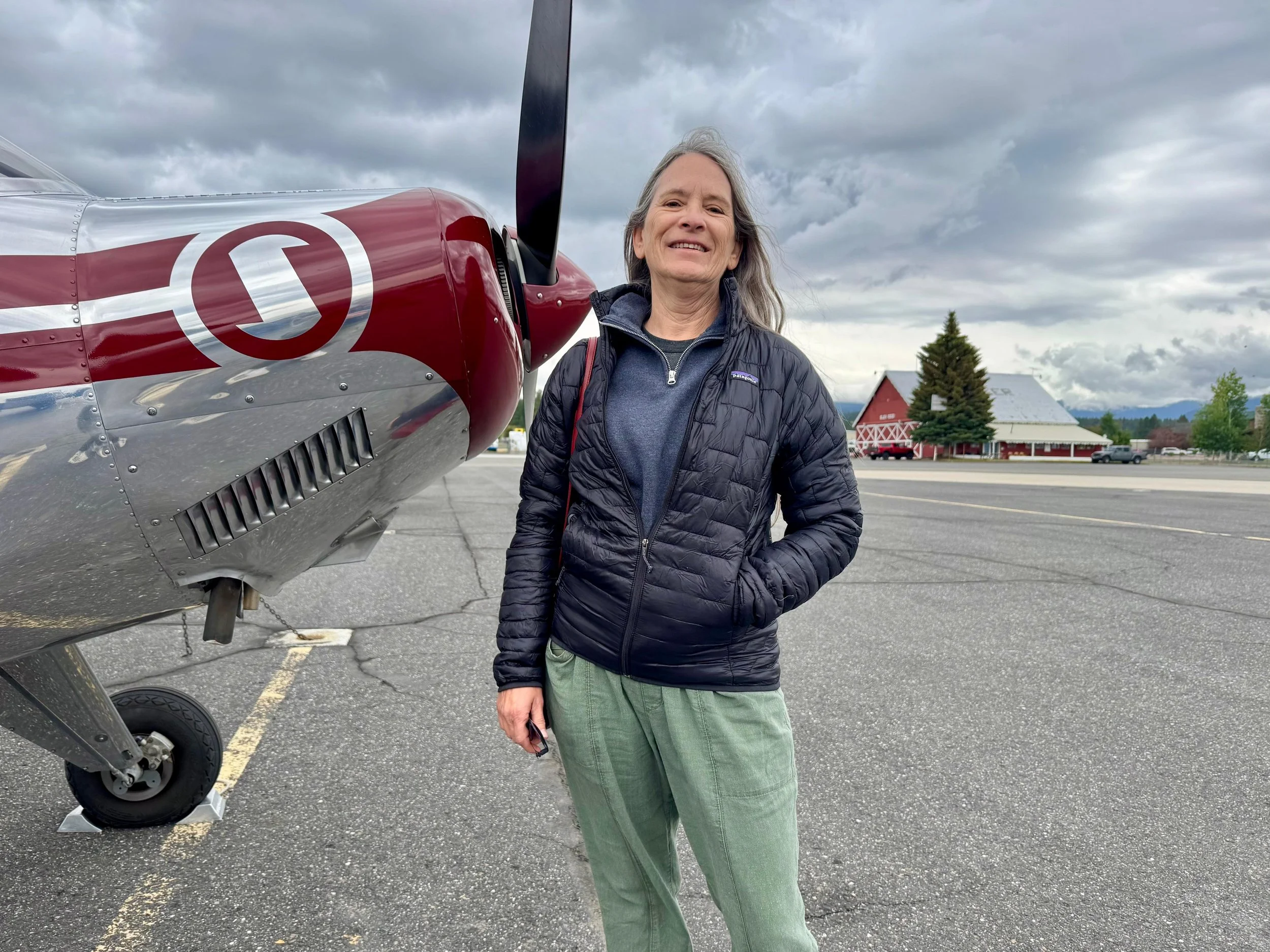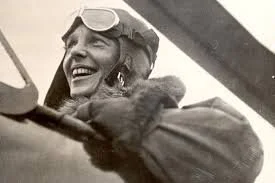Breaking the Cloud Ceiling
Lisa with her 1947 Luscombe 8E, Zola
Lisa Kienholz named her airplane, a 1947 Luscombe 8E, Zola, after her grandmother. “It’s a strong and feminine name,” she says. Perfect for the pioneering design: an all-metal aircraft made by Donald Luscombe in 1937, when most “flying machines” were tube-and-fabric construction.
Lisa first learned to fly out of the Santa Monica airport. “A friend took me up in a small vintage airplane and I got hooked,” she says. “Flying’s a legal drug that’s a whole lot better than taking drugs.” But she soon ran out of money and quit. Flying is a muscle, like everything. “You’ve got to keep at it.”
She tried to forget the headiness of flight and became a bookkeeper, a job she continues to hold today. She works with a variety of businesses and organizations, including several preschools in the area.
But her spirit clamored for more adventure. Exchanging ether for water, she and her husband bought a sailboat and sailed for ten years. She had a child, her marriage ended, and she raised her son on her own.
But the sky tugged at her. Call it the reverse pull of gravity. In 2013, she could no longer ignore it. Lisa thought of a friend of her son’s whose dad had always been interested in flying. She looked him up on Facebook. His profile picture featured him in front of a little vintage plane. She asked him if he’d take her flying.
He did. It was as if she’d never left the vaulted air.
Luckily, Lisa didn’t have to start from zero. She still had her logbook from the 80s and the hours she’d flown when she was 20, which still counted toward her total. Glad not to have to start from scratch, Lisa was both less afraid and a more cautious aviator in her 50s.
The minimum is still 40 hours to earn a private pilot’s license, but many student pilots now take upwards of 70 hours. These hours must include at least 5 hours of “cross-country” flights of a distance of 50 miles minimum.
In the aviation community, a license means a “license to learn to fly.” In other words, while logging the hours and passing the tests gives new pilots clearance to fly, everyone understands the unwritten, exciting edict: there’s always more to learn.
Learning that necessitates adapting to new technology. The paper charts she’d used to map out her routes have been replaced by software. “An iPad draws a nice line for us,” she says, chuckling.
Planes built with up-to-date tech keep people out of danger, but because of the automation, fewer folks have the old-fashioned Stick and Rudder skills, which are often necessary to get out of trouble.
For the past decade, Lisa’s “second home” has been a hangar she owns at the Santa Paula airport. Established by farmers in 1927 when flying was faster and arguably safer than driving, there’s no flight tower. Because everyone counts so fully on each other, there’s a real sense of coziness.
Aviators are a small group. Focusing on non-commercial, or general aviation, further rarefies the group. Once you add tailwheel or vintage pilots to the mix, the concentric circles shrink. “And if you fly the same kind of airplane, you’re family,” Lisa says proudly. “If you have a question, someone always has the answer, or is curious enough to help you figure it out.”
Lisa repeats that she couldn’t imagine a warmer, more supportive community. Aviators come from all walks of life, with many different beliefs and perspectives. “It feels good to connect with people under the banner of passionate interests and specific skills,” she says.
Most of the aviators she knows are men. Women make up only about 6% of pilots in the U.S. The Ninety-Nines, an international non-profit that originated with 99 female pilots in 1929, aims to grow that number. In the 40s, many of these women flew planes for the Allies during WWII, though not in combat. As soon as the war ended, they were sent back to the kitchen.
Amelia Earhart
My own fascination with Amelia Earhart, whose biographies I devoured as a kid, found purchase in Maggie O’Connell, the Alaskan bush pilot in the early-nineties TV show Northern Exposure. As the only woman who owned her own plane, her femaleness in this space was both centered and hum-drum—though it was clear that moving to the margins, 600,000 miles of wilderness, made this dual position possible. I appreciated her admixture of courage and vulnerability, spikiness and softness, quick wit and blind spots. In other words, the act of flying, which is the act of living writ banner-large.
Maggie O’Connell, pilot on Northern Exposure
To help others like her younger self, Lisa serves on the board of the Figure1Foundation, a non-profit that gives scholarships for licensure and “tailwheel training.” The Foundation also offers an Upset Recovery/Spin Training/Introduction to Aerobatics. Pilots need to be comfortable righting the aircraft without panicking. Figure 1 Foundation recently added glider training to the scholarships, which kids as young as 14 are allowed to fly. It’s a good way to practice Stick and Rudder skills, as well as energy management.
Learning to pilot a glider gives more people the chance to grant themselves the most common genie wish. “The feeling I get in the air is indescribable,” Lisa says. The Western U.S. is so beautiful. To see all there is to see, we only have two choices: “Google or fly.”
For bookkeeping services, email Lisa@kienholz.la




